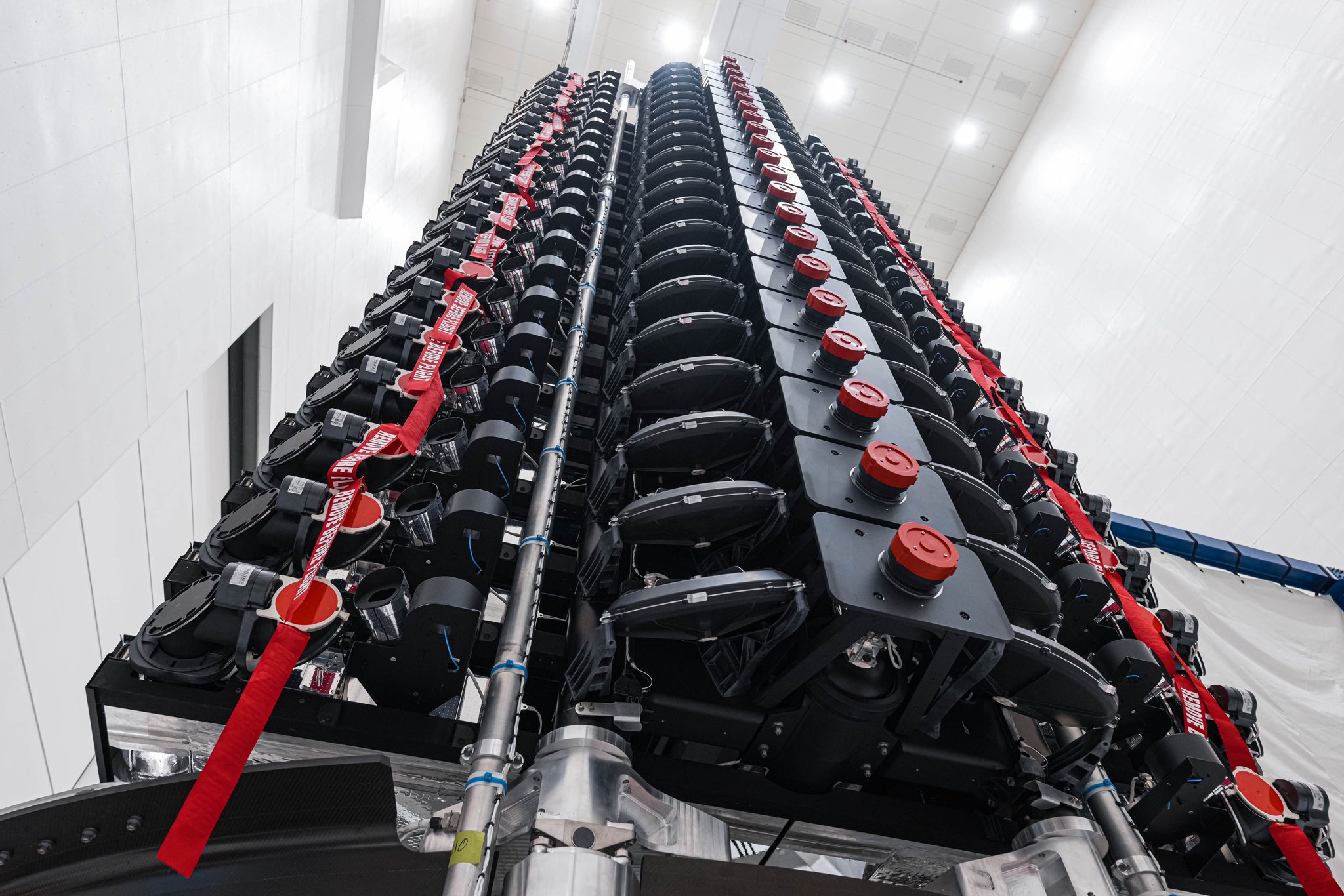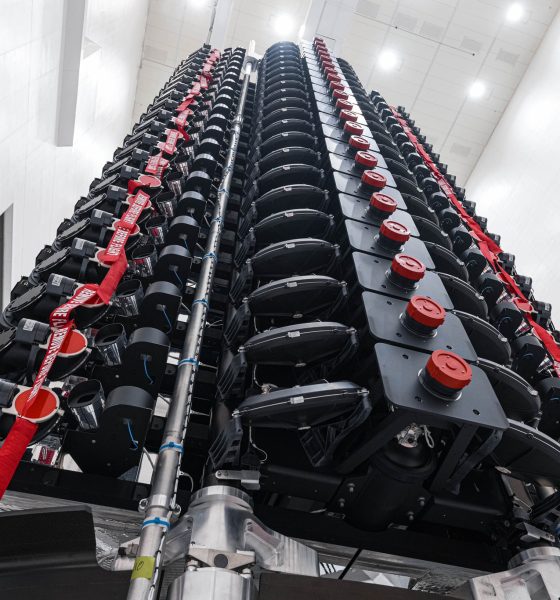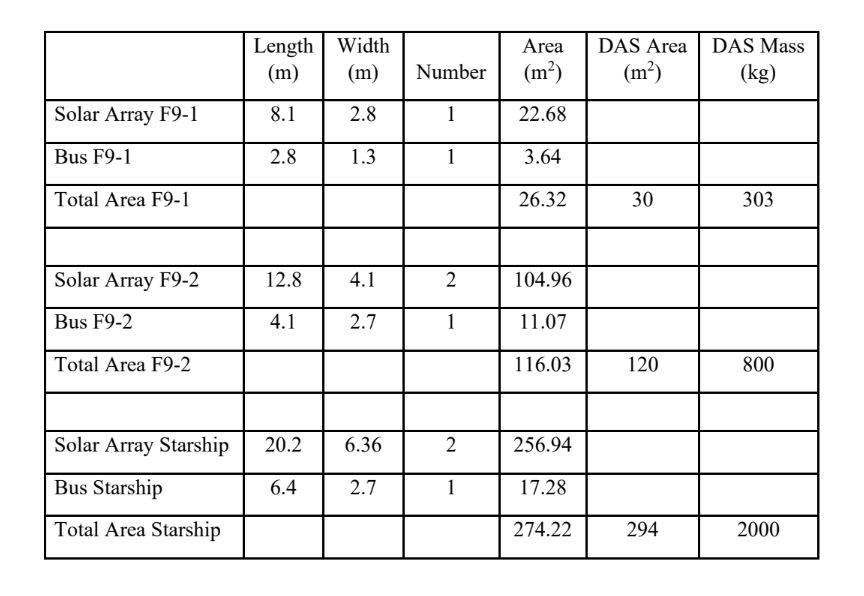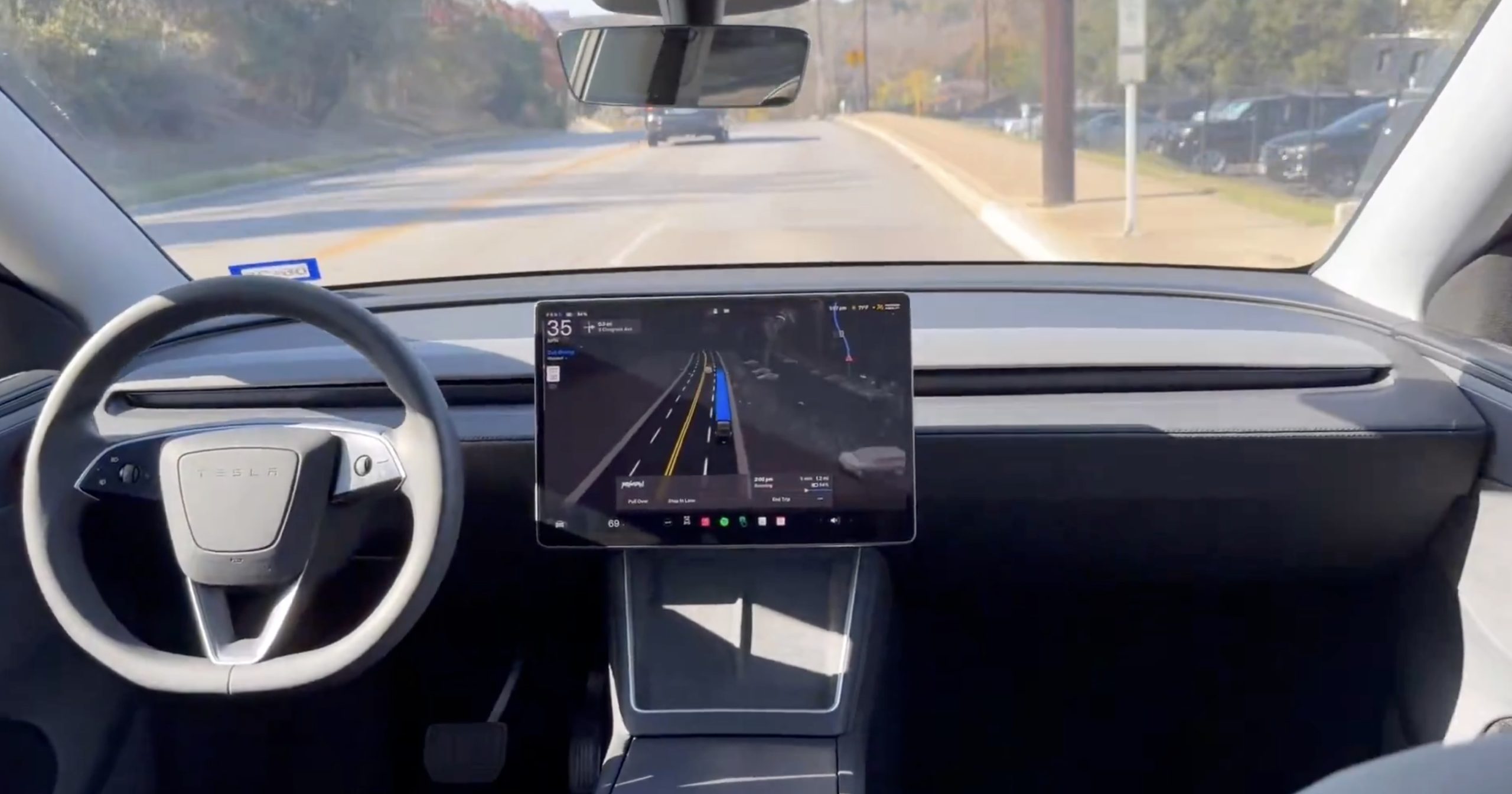

News
SpaceX unveils next-gen Starlink V2 Mini satellites ahead of Monday launch
SpaceX has released official specifications and photos of its next-generation Starlink V2 Mini satellites, which are set to launch for the first time as early as Monday, February 27th.
The new satellites are the future of SpaceX’s Starlink constellation, and the information the company revealed helps demonstrate why.
The update that's rolling out to the fleet makes full use of the front and rear steering travel to minimize turning circle. In this case a reduction of 1.6 feet just over the air— Wes (@wmorrill3) April 16, 2024
SpaceX’s confusingly-named Starlink 6-1 mission will carry the first 21 Starlink V2 satellites into low Earth orbit (LEO) as early as 1:38 pm EST (18:38 UTC) on Monday, February 27th. The satellites will operate under SpaceX’s Starlink Gen2 FCC license, which currently allows the company to launch up to 7,500 of a nominal 29,998 satellites. At the same time as it continues to fill out its smaller 4,408-satellite Starlink Gen1 constellation with smaller V1.5 satellites, SpaceX has already begun launching the same smaller V1.5 satellites under the Gen2 license.
Eventually, those smaller and less capable satellites will likely be replaced with larger V2 satellites, but SpaceX appears to have decided that quickly adding suboptimal capacity is better than waiting for an optimal solution. In theory, that optimal solution is larger Starlink V2 satellites. As discussed in a previous FCC filing, SpaceX intends to operate up to three different types of Starlink satellites in its Starlink Gen2 constellation. The first variant is likely identical to the roughly 305-kilogram (~673 lb) Starlink V1.5 satellites that make up most of its Starlink Gen1 constellation.

Meanwhile, SpaceX has already built and delivered dozens of full-size Starlink V2 satellites to Starbase, Texas. Those more optimal spacecraft reportedly weigh anywhere from 1.25-2 tons (2750-4400 lb) each, offer almost 10 times more bandwidth than V1.5 satellites, and are so large and ungainly that they can only be launched by SpaceX’s next-generation Starship rocket. Starship is substantially delayed, however, so SpaceX chose to develop a third Starlink satellite variant combining many of the full-size V2 benefits into a package that can be launched by SpaceX’s existing Falcon 9 rocket.
Prior to SpaceX’s February 26th tweets, all that was known about those Starlink “V2 Mini” satellites were a few specifications included in a response to the FCC. The new information provided by SpaceX appears to confirm some of those specifications. For example, knowing that Falcon 9 will carry 21 V2 Mini satellites and that the rocket’s current payload record is 17.4 tons, each V2 Mini satellite likely weighs no more than 830 kilograms (~1830 lb). That’s very close to the 800-kilogram estimate provided in the October 2022 filing.
More importantly, SpaceX revealed that each Starlink V2 Mini satellite will have more powerful antennas and access to a new set of frequencies. Combined, each satellite will have up to “~4x more capacity…than earlier iterations” like Starlink V1. Compared to current V1.5 satellites, that means that Starlink V2 Mini could squeeze approximately 50% more network capacity out of each unit of satellite mass. As a result, even though the larger V2 Mini design has reduced the number of satellites Falcon 9 can launch almost threefold, the 21 V2 Mini satellites it can launch will add ~50% more bandwidth than the ~57 V1.5 satellites it would have otherwise launched.
The larger satellites mean that it will take three times as many Falcon 9 launches to expand Starlink V2 coverage, but the areas that are covered will have the capacity to serve several times more customers or deliver much higher bandwidth to the same number of customers.
SpaceX also announced that it has developed a new argon-fueled Hall effect thruster for Starlink V2 satellites. To avoid the high costs of xenon propellant, the most common choice of fuel for electric propulsion systems, SpaceX already developed a first-of-its-kind krypton Hall effect thruster for Starlink V1 and V1.5 satellites. Spread over the almost 4000 Starlink V1.x satellites SpaceX has launched since May 2019, the relatively low cost of krypton (roughly $500-1500/kg vs. $3000-10,000+/kg for xenon) has likely saved the company hundreds of millions of dollars.
The shift from krypton to argon could be similarly beneficial. Relative to krypton, the argon required to fuel Starlink V2 satellites will be practically free. 99.999%-pure argon can be purchased in low volumes for just $5 to $17 per kilogram, and each Starlink V2 Mini satellite will likely need less than 80 kilograms. SpaceX likely spent around $50 million (+/- $25M) on krypton for the almost 4000 Starlink V1 satellites it’s launched to date. As a result, even if every Starlink V2 satellite needs an excessive 200 kilograms of argon, fueling its next constellation of almost 30,000 V2 satellites could cost SpaceX less than fueling 4000 V1 satellites.
Tune in below around 1:30 pm EST (18:30 UTC) to watch SpaceX’s first Starlink V2 launch live.

Elon Musk
Elon Musk and Tesla AI Director share insights after empty driver seat Robotaxi rides
The executives’ unoccupied tests hint at the rapid progress of Tesla’s unsupervised Robotaxi efforts.

Tesla CEO Elon Musk and AI Director Ashok Elluswamy celebrated Christmas Eve by sharing personal experiences with Robotaxi vehicles that had no safety monitor or occupant in the driver’s seat. Musk described the system’s “perfect driving” around Austin, while Elluswamy posted video from the back seat, calling it “an amazing experience.”
The executives’ unoccupied tests hint at the rapid progress of Tesla’s unsupervised Robotaxi efforts.
Elon and Ashok’s firsthand Robotaxi insights
Prior to Musk and the Tesla AI Director’s posts, sightings of unmanned Teslas navigating public roads were widely shared on social media. One such vehicle was spotted in Austin, Texas, which Elon Musk acknowleged by stating that “Testing is underway with no occupants in the car.”
Based on his Christmas Eve post, Musk seemed to have tested an unmanned Tesla himself. “A Tesla with no safety monitor in the car and me sitting in the passenger seat took me all around Austin on Sunday with perfect driving,” Musk wrote in his post.
Elluswamy responded with a 2-minute video showing himself in the rear of an unmanned Tesla. The video featured the vehicle’s empty front seats, as well as its smooth handling through real-world traffic. He captioned his video with the words, “It’s an amazing experience!”
Towards Unsupervised operations
During an xAI Hackathon earlier this month, Elon Musk mentioned that Tesla owed be removing Safety Monitors from its Robotaxis in Austin in just three weeks. “Unsupervised is pretty much solved at this point. So there will be Tesla Robotaxis operating in Austin with no one in them. Not even anyone in the passenger seat in about three weeks,” he said. Musk echoed similar estimates at the 2025 Annual Shareholder Meeting and the Q3 2025 earnings call.
Considering the insights that were posted Musk and Elluswamy, it does appear that Tesla is working hard towards operating its Robotaxis with no safety monitors. This is quite impressive considering that the service was launched just earlier this year.
Elon Musk
Starlink passes 9 million active customers just weeks after hitting 8 million
The milestone highlights the accelerating growth of Starlink, which has now been adding over 20,000 new users per day.

SpaceX’s Starlink satellite internet service has continued its rapid global expansion, surpassing 9 million active customers just weeks after crossing the 8 million mark.
The milestone highlights the accelerating growth of Starlink, which has now been adding over 20,000 new users per day.
9 million customers
In a post on X, SpaceX stated that Starlink now serves over 9 million active users across 155 countries, territories, and markets. The company reached 8 million customers in early November, meaning it added roughly 1 million subscribers in under seven weeks, or about 21,275 new users on average per day.
“Starlink is connecting more than 9M active customers with high-speed internet across 155 countries, territories, and many other markets,” Starlink wrote in a post on its official X account. SpaceX President Gwynne Shotwell also celebrated the milestone on X. “A huge thank you to all of our customers and congrats to the Starlink team for such an incredible product,” she wrote.
That growth rate reflects both rising demand for broadband in underserved regions and Starlink’s expanding satellite constellation, which now includes more than 9,000 low-Earth-orbit satellites designed to deliver high-speed, low-latency internet worldwide.
Starlink’s momentum
Starlink’s momentum has been building up. SpaceX reported 4.6 million Starlink customers in December 2024, followed by 7 million by August 2025, and 8 million customers in November. Independent data also suggests Starlink usage is rising sharply, with Cloudflare reporting that global web traffic from Starlink users more than doubled in 2025, as noted in an Insider report.
Starlink’s momentum is increasingly tied to SpaceX’s broader financial outlook. Elon Musk has said the satellite network is “by far” the company’s largest revenue driver, and reports suggest SpaceX may be positioning itself for an initial public offering as soon as next year, with valuations estimated as high as $1.5 trillion. Musk has also suggested in the past that Starlink could have its own IPO in the future.
News
NVIDIA Director of Robotics: Tesla FSD v14 is the first AI to pass the “Physical Turing Test”
After testing FSD v14, Fan stated that his experience with FSD felt magical at first, but it soon started to feel like a routine.

NVIDIA Director of Robotics Jim Fan has praised Tesla’s Full Self-Driving (Supervised) v14 as the first AI to pass what he described as a “Physical Turing Test.”
After testing FSD v14, Fan stated that his experience with FSD felt magical at first, but it soon started to feel like a routine. And just like smartphones today, removing it now would “actively hurt.”
Jim Fan’s hands-on FSD v14 impressions
Fan, a leading researcher in embodied AI who is currently solving Physical AI at NVIDIA and spearheading the company’s Project GR00T initiative, noted that he actually was late to the Tesla game. He was, however, one of the first to try out FSD v14.
“I was very late to own a Tesla but among the earliest to try out FSD v14. It’s perhaps the first time I experience an AI that passes the Physical Turing Test: after a long day at work, you press a button, lay back, and couldn’t tell if a neural net or a human drove you home,” Fan wrote in a post on X.
Fan added: “Despite knowing exactly how robot learning works, I still find it magical watching the steering wheel turn by itself. First it feels surreal, next it becomes routine. Then, like the smartphone, taking it away actively hurts. This is how humanity gets rewired and glued to god-like technologies.”
The Physical Turing Test
The original Turing Test was conceived by Alan Turing in 1950, and it was aimed at determining if a machine could exhibit behavior that is equivalent to or indistinguishable from a human. By focusing on text-based conversations, the original Turing Test set a high bar for natural language processing and machine learning.
This test has been passed by today’s large language models. However, the capability to converse in a humanlike manner is a completely different challenge from performing real-world problem-solving or physical interactions. Thus, Fan introduced the Physical Turing Test, which challenges AI systems to demonstrate intelligence through physical actions.
Based on Fan’s comments, Tesla has demonstrated these intelligent physical actions with FSD v14. Elon Musk agreed with the NVIDIA executive, stating in a post on X that with FSD v14, “you can sense the sentience maturing.” Musk also praised Tesla AI, calling it the best “real-world AI” today.








